30.000 visit ESA's stand at Hanover Fair
"You're cooking fish tonight, I can smell it all over the house!", is a phrase many cooks hear.
"How fit am I? Should I exercise and if so how much?"
Solutions to these and other daily problems were illustrated by ESA at the recent Hanover Fair 2002 in Germany, solutions based upon technology, innovations and systems developed for European space programmes.
ESA’s stand, organised by MST Aerospace, the Technology Transfer broker in Germany, presented more than 15 new examples of space technology ready to be used in non-space applications.
European companies looking for space technology
"We have registered a growth in interest from industry to take advantage of space technology and inventions," said Werner Dupont, Managing Director of MST Aerospace.
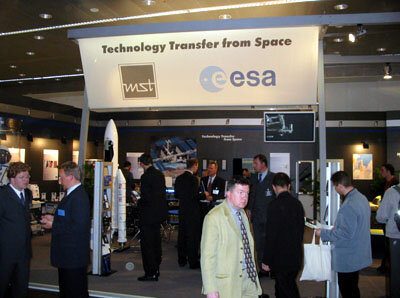
"Last year we launched our virtual market place technology-forum.com and daily access to this website is steadily increasing. The site shows 259 space technologies ready to be used in non-space applications and we also have 261 requests for innovative solutions to specific problems. Today MST has contacts with more than 1000 companies, primarily in Germany, which are interested in space technology for non-space applications". MST Aerospace is part of the ESA's European Space Technology Transfer Network with representatives in ESA Member States.
The MST stand had 30.000 visitors during the six days of the fair and staff were kept busy illustrating the technology transfers on display. Several radio channels also used the opportunity to catch a good interview on an innovative technology transfer.
Innovations on display

A very special exhibit, the Dutch Nuna-Solar Car that won the 3010 km World Solar Challenge race across Australia last November, drew much attention. Nuna team members were there ready to answer questions and happy to demonstrate the different space technologies that have gone into this innovative car, such as carbon fibre and Kevlar composites, highly efficient Gallium Arsenide solar cells, lightweight Lithium-ion batteries and a power management system based on satellite technology.
"This year at Hanover we have seen a great interest from small entrepreneurs looking for an innovative solution to problems in their factories and production lines, Many have visited our stand to see whether a space technology could be the right answer," said a representative of ESA’s Technology Transfer Programme. "As most of ESA technologies are researched and developed under contract with European companies, we offer not only the technology but we can also propose expert European partners who can support the transfer of the space technology to a non-space application."
The different uses developed from space technology included:
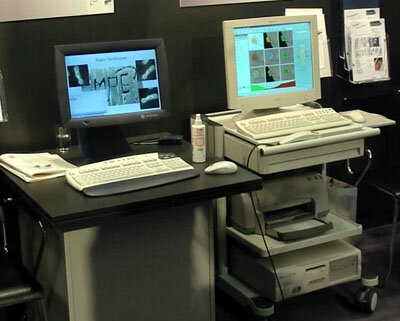
Diagnose skin cancer
An instrument for the early diagnosis of skin cancer based upon a Scaling Index Method, used by ESA to identify new far away galaxies. This method can recognize objects and patterns by means of their topological structure; the spectrum of the scaling index is a kind of fingerprint of the structure. Another use of the Scaling Index Method on display will help in the early detection of osteoporosis as it checks the porosity of bone structures.
Control pollution
An innovative ceramic gas sensor was developed for testing thermal protection materials for re-entry space vehicles. These sensors are used in tests at temperatures of more than 10,000 degrees centigrade in dedicated wind-tunnels with extreme flow loads. The same sensors are now used to control exhaust gases for burners in home heaters, to safeguard our environment.
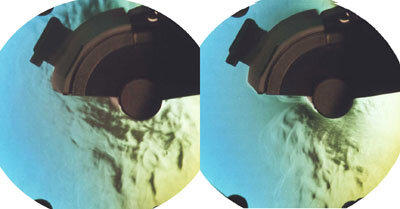
Cook without cooking fumes
A very interesting application was a new cooker hood on display for kitchens based upon space technology. The technology used to control airflow around fast moving objects, such as rockets and satellites is now being used to better control the fumes from our daily cooking. The highly efficient innovative cooker hood was demonstrated to visitors and showed a near 100 percent capture of all fumes. Future applications include industrial production lines and should lead to a better and safer environment for many factory workers.
Improved lithography and CDs
Optical systems for space applications require a combination of high-accuracy and stability, often under extreme conditions. The expertise achieved from space hardware production of instruments on Envisat and ERS is now used in non-space applications such as lithography, CD players and photocopying machines.
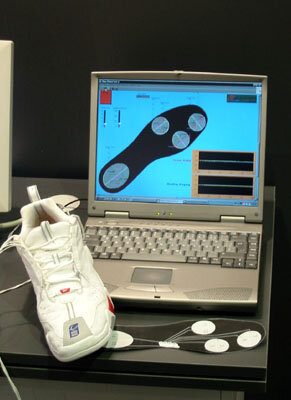
Run safer
The sensor film developed to measure impact of micro-meteorites onboard ESA spacecraft can now be used to create sensitive car bumpers to detect accidents promptly. These sensors can also be used to optimise airbags, safety belts and other car safety devices and should find their way over the coming years to everyone's car. Another interesting transfer is the use of the sensor in sports shoes to determine the ergonomic conditions for runners and potential risks during exercises. Research is still in progress but this could lead to better sporting tools for all sports enthusiasts.
Fire extinguishers
Cool solid gas generators based upon similar equipment produced for space applications are now produced for non-space use. The advantages over conventional pressured gas bottles are manifold: no maintenance is required, they are very safe with no pressure and highly reliable. Cool solid gas generators can easily be applied in fire extinguishers and in old buildings they can be installed without new cables and sprinkler hardware. Since no Halon is used, the system is environmentally safe. Other applications include airbags, airplane evacuation slides and oxygen masks.
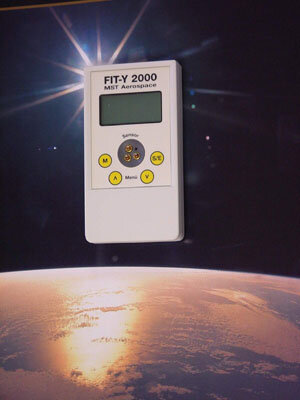
Checking fitness
A novel device allowing non-invasive measurements of cardiovascular parameters is based upon an opto-mechanical measuring technique used for blood circulation examining the blood circulation of astronauts on-board the International Space Station. By measuring the blood circulation on the skin of a finger and the temperature, and combining this with properties such as height, weight, age and gender, a fitness value can be provided within 30 seconds, plus additional information such as the pulse rate and blood pressure. from space research.
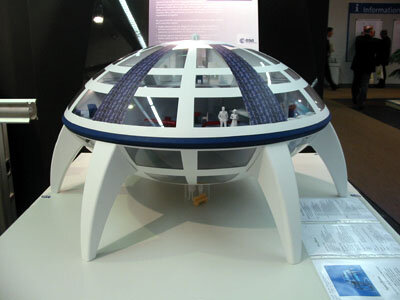
Innovative housing
An exhibit of ESA's highly attractive futuristic space house resulted in many questions from the visitors to the fair and many constructors wanted to know more above how they could build this innovative concept house which was originally planned for a long-term stay of astronauts on other planets such as Mars. The Space House is a good response to many of today’s environmental concerns with its zero energy or even positive energy balance, and its innovative design and living concept. It is built with high-performance carbon-fibre composite technology which originated from space research.
European space programme - rich source for terrestrial benefits

"This year at the fair we have launched the ’Space Technology Inside’ label, which certifies the space origin of products or their manufacturing process," said Werner Dupont. "The aerospace sector will remain an excellent pool of ideas for technological innovations. ESA’s space projects such as Envisat, and participation in the International Space Station will offer a multitude of new aerospace technologies with a high terrestrial benefit."
For more information on the opportunities in ESA space technology and the European Space Technology Transfer Network please contact:
MST Aerospace GmbH
Mr Werner Dupont/Mr Johannes Schmidt
Eupener Str. 150
D-50933 Köln
Germany
Tel.: +49 (0)221 949 89 20
Fax: +49 (0)221 491 24 43
E-mail: office@mst-aerospace.de
URL: http://www.technology-forum.com
ESA Technology Transfer and Promotion Office
Dr Pierre Brisson
Head of Technology Transfer and Promotion Office
European Space Agency - ESTEC
PO Box 299
2200 AG Noordwijk
The Netherlands
Tel: +31 (0)71 565 4929
Fax: +31 (0)71 565 3854
E-mail: pierre.brisson@esa.int
URL: http://www.esa.int/technology





